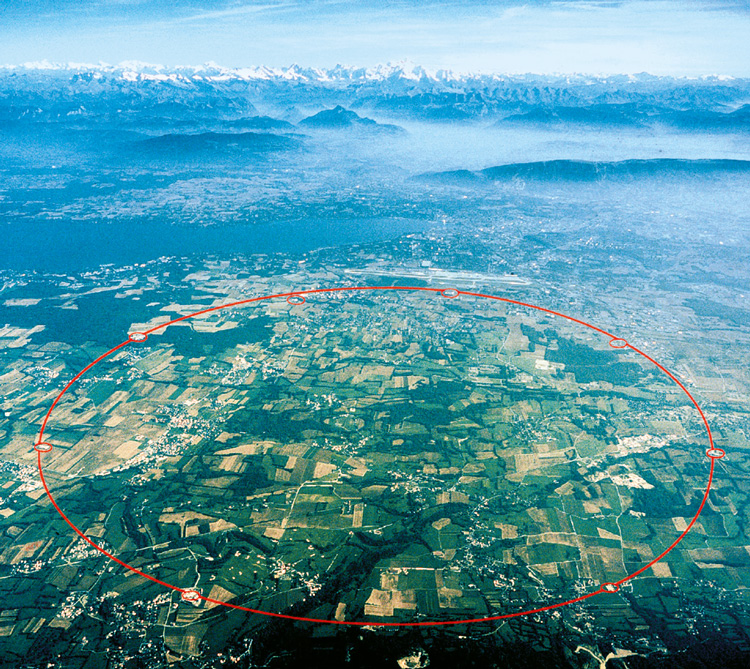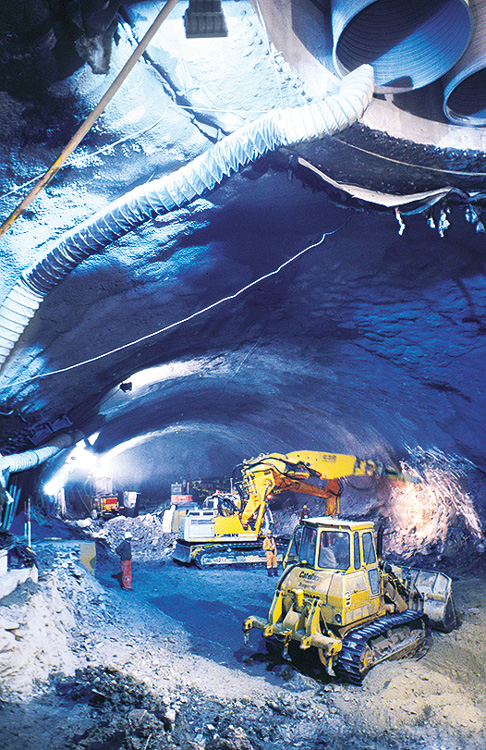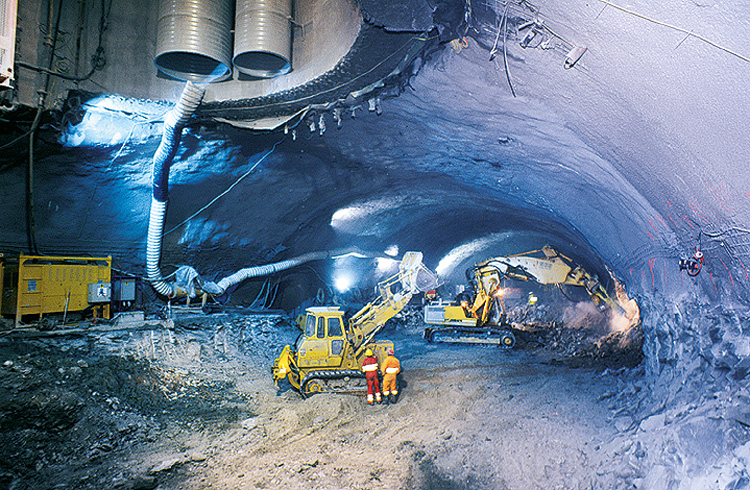


DSI Permanent Single Bar Anchors secure new electronuclear accelerator
CERN (Centre Européen pour la Recherche Nucléaire), a European Organisation for Nuclear Research, is close to Lake Geneva and located deep underneath the earths surface near the French-Swiss border. The organisation which was founded by 12 European countries in 1954 manages the largest particle research center in the world.
Geneva became the location of the Organisation in the early 1950's principally because the Swiss government donated the land for the facilities and because the government was politically neutral. Today, the CERN facilities are vailable free of charge to universities, government departments and science laboratories from around the world to conduct nuclear physics research and experiments.
In the past few years, however, the existing CERN accelerators reached the limits of their capacity. As a result, a larger and more efficient LHC (Large Hadron Collidier) was needed. To save construction costs, the infrastructure of the existing circular accelerator was largely integrated into the LHC. This applies in particular to the 27 km long, circular, reinforced concrete lined tunnel that connects the individual stations (accelerator, detectors etc.) with each other.
However, all functional units for acceleration, measuring, monitoring etc. have to be reconstructed - at a depth of more than 100 meters! Construction of the new functional units will take place in oversized caverns (up to 35 m wide and 42 high) which are connected to the surface by means of vertical shafts. During the construction period these shafts are used for transporting personnel, machinery (tunnel excavators and other equipment) as well as excavated material up and down using gantry cranes.
DSI Single Bar Tendons were used to anchor the enormous dead load of the lining of the thick-walled shafts back into the rock. The shafts are up to 80 m deep and have diameter of about 20 m. The anchors with a tot l length of 15 meters were supplied to the job site in 5 m long sections.
Because of the simplicity of the couplers the anchors were assembled to their full length in the cavern. The threadbar anchors whose double corrosion protection has been successfully proven over the past three decades are to permanently stabilize the underground structure in which particles will be shot at each other at nearly the speed of light in the very near future.
In addition to the supply of anchors and rental of stressing equipment, DSI's Central Technical Department assisted in the construction work by carrying out the load tests with all required measurements as well as assisting the first installation and stressing operations.
After the completion of the construction in 2005, the LHC will be put in operation by early 2007.
